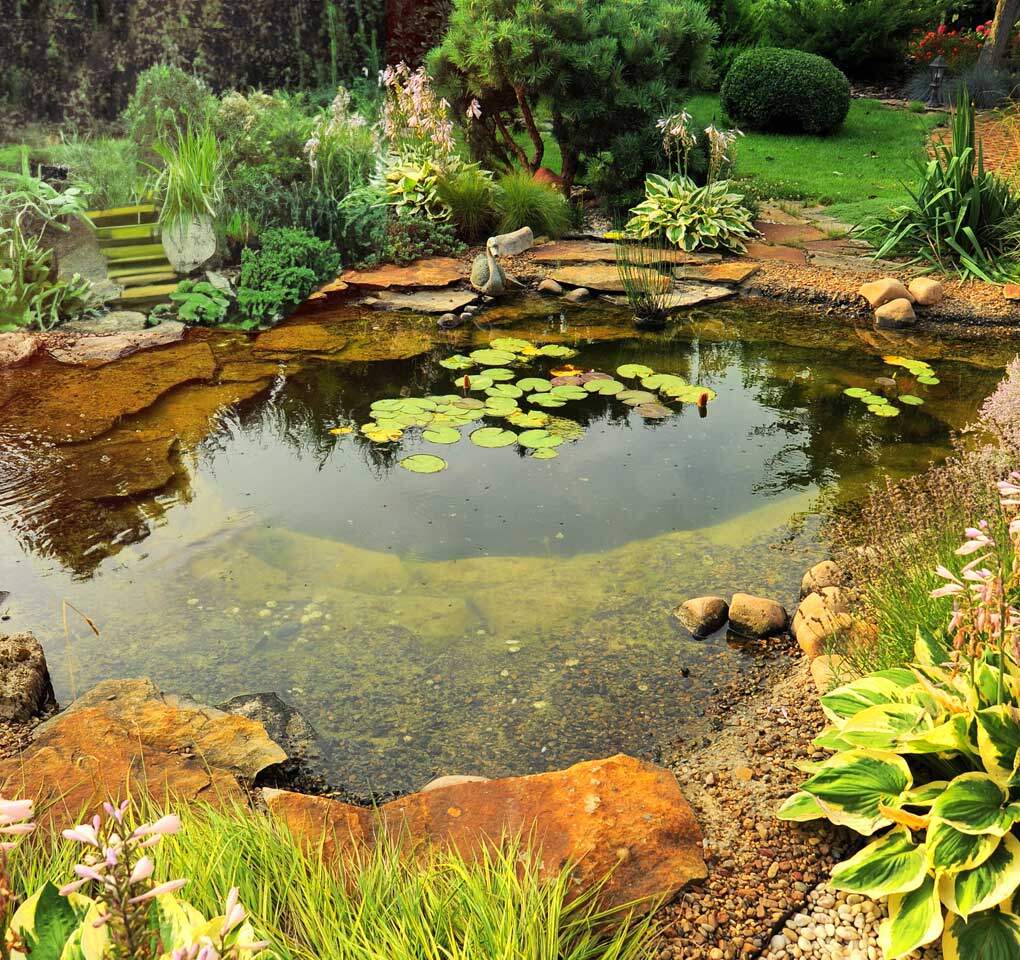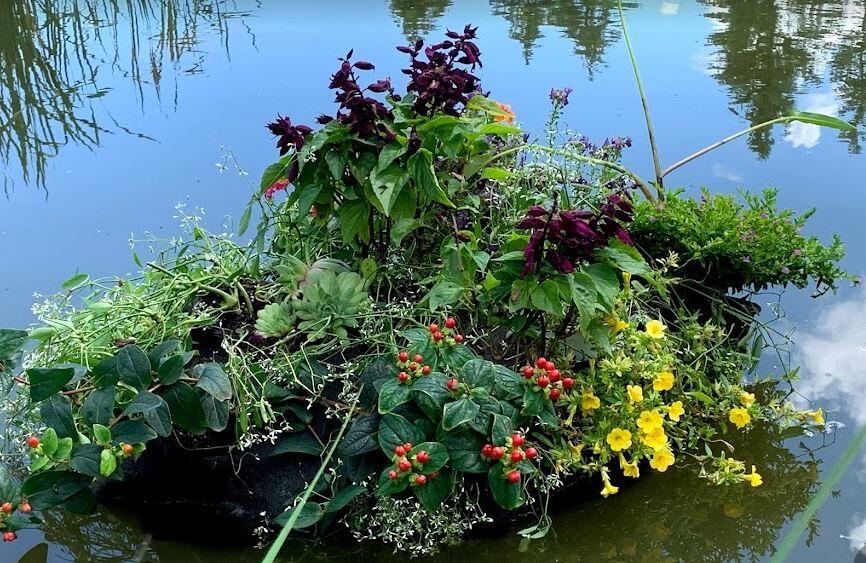Further Assessing the Efficacy of Open-Cell Foam to Remove Algae and Algae-Toxins;
Cape Cod Validation
This whitepaper captures the independent field validation of AquaFlex’s Open-Cell foam to remediate
Harmful Algal Blooms (HABs). The mesocosm program discussed herein took place at two (2) Cape
Cod, Massachusetts ponds, Lovell’s and Shubael’s, both in the town of Barnstable.
The field data showed that AquaFlex Open-Cell foam technology reduced toxins or microcystins
in a 10-hour period in water by 40%-60% in one validation test, and in a second test the Open-
Cell foam reduced the microcystins by 60%-80% over an 18-hour period. These results are
significant and will be addressed below.
Credentials of the Researchers/Investigators
Research scientist Nancy Leland utilizing the University of New Hampshire’s Center for Freshwater
Biology, performed the independent, validation field-study. We note that Ms. Leland and the University
of New Hampshire Center for Freshwater Biology were the recipients of 2018 U.S. Environmental
Protection Agency (EPA) Environmental Merit Award.
Furthermore, Ms. Leland is responsible for the development of citizen-based cyanobacteria monitoring
protocol for estimation of toxin levels and prediction of bloom conditions, design and testing of
limnological equipment for use in cyanotoxin bioaccumulation studies, and field monitoring, research,
and development of educational materials. Ms. Leland holds three US patents.
Additionally, since 2015, Ms. Leland has not only been collaborating with the Barnstable’s health
officer, but the tax-exempt organization Association to Preserve Cape Cod (“APCC”). Both the town of
Barnstable and APCC have adopted and implemented Ms. Leland’s technology and methods developed
for monitoring and testing the water for bloom forming cyanobacteria and associated microcystins. It is
noteworthy, Ms. Leland brought to bear her experience, advanced-technologies and procedures to
perform this independent validation study of AquaFlex Open-Cell foam technology.
AquaFlex Deployment and Validation
Page 2 of 9
The following links provide background on APCC’s water monitoring program on Cape Cod that is
based on Ms. Leland’s technology and methods in conjunction with the University of New Hampshire’s
Center for Freshwater Biology:
• Association to Preserve Cape Cod Cyanobacteria Monitoring Program:
https://apcc.org/presentations/APCC’s%20Cyanobacteria%20Monitoring%20Program.pdf
• Long-time UNH researcher, Lab honored by EPA, SEACOAST ONLINE (October 2, 2018):
https://www.fosters.com/news/20181002/long-time-unh-researcher-lab-honored-by-epa
• Doug Fraser, Researchers seek to head off blooming problem in Cape ponds, CAPE COD
TIMES (August 12, 2019): https://www.capecodtimes.com/news/20190812/researchers-seek-tohead-
off-blooming-problem-in-cape-ponds
Key excerpts from this article are as follows:
“Cyanobacteria like it hot,” said Donald Anderson, the U.S. director for Harmful Algal Blooms and a
senior scientist at WHOI. With more moisture in the air due to global warming, the Cape has been seeing
more of its water delivered in torrential rainstorms. That causes more stormwater runoff and discharge
into surface water bodies.
“When you talk about climate change, typically people say there will be more of these blooms in fresh
water,” Anderson said. “That’s a problem that’s not going away, and it’s getting worse on the Cape and
elsewhere.”
“The existing system is utterly reactive. You have to notice visible scum on the pond,” association
Executive Director Andrew Gottlieb said. Samples are then taken and sent to a state lab, and it can take
days to get a result.
“There’s a built-in delay during which people and pets get exposed to potentially dangerous levels of
toxins,” Gottlieb said. The association conferred with the EPA and UNH researchers. Using grant money,
it stocked a lab with equipment, including a fluorometer that can estimate bloom density using pigments. It
bought kits to do the sampling and hired summer interns. The association’s intent is to help towns and
pond coalitions with lab work, equipment and, in some cases, by doing the sampling, Gottlieb said.
• Geoff Spillane, Toxic algae bloom still present in Santuit Pond in Mashpee, CAPE COD TIMES
(November 13, 2019): https://www.capecodtimes.com/news/20191113/toxic-algae-bloom-stillpresent-
in-santuit-pond-in-mashpee
Key excerpts from this article as follows:
AquaFlex Deployment and Validation
Page 3 of 9
A cyanobacteria bloom that has plagued Santuit Pond since early summer continues to pose a health risk
to wildlife, pets and humans.
“That it’s happening at all — let alone this late in the year — is a disgrace,” said Andrew Gottlieb,
executive director of the Association to Preserve Cape Cod.
“This is clear real-time evidence of the implication of climate change on Cape Cod and the effect of
heavier rains and warmer temperatures.” [Andrew Gottlieb]
Context and Background
The problems with HABs have been recently featured by several national news networks (e.g., NBC,
CNN). While HABs have been presented generally as a “southern United States issue,” in fact, HABs
are present throughout North America and internationally (Asia, Europe, Middle East). Recently,
AquaFlex learned HABs are present and an issue in Israel’s Sea of Galilee.
HABs occur when colonies of algae, which includes cyanobacteria (sometimes referred to as “bluegreen
algae”) grow and produce toxins referred to as cyanotoxins which cause harmful effects on
people, mammals (e.g. dogs), fish, shellfish, marine mammals, birds and other life. Cyanotoxins usually
target the nervous system, the liver, or the skin.1
HABs are occuring more often and in locations not previously affected as a result of climate change and
increasing challenges with uncontrolled discharges of excess nutrients (mainly phosphorus and nitrogen)
into bodies of water. Phosphorus and nitrogen are used by humans to fertilize and they ultimately enter
ponds, lakes, rivers and salt waters.
Among cyanotoxins are some of the most powerful natural poisons known, including those which can
cause rapid death by respiratory failure. The toxins include potent neurotoxins, hepatotoxins,
cytotoxins, and endotoxins. Recreational exposure to cyanobacteria can result in gastro-intestinal and
hay fever symptoms or skin rashes.
Exposure to the cyanobacteria hepatotoxin microcystin causes serious damage to the liver.
Acute health effects include abdominal pain, vomiting and nausea, diarrhea, headache, blistering around
the mouth, and after inhalation sore throat, dry cough, and pneumonia.
Exposure to the cyanobacteria neurotoxin BMAA may be an environmental cause of neurodegenerative
diseases such as amyotrophic lateral sclerosis (ALS), Parkinsons’s disease, and Alzhiemer’s disease.
Every U.S. coastal and Great Lakes state experiences HABs along with almost every other country
throughout the world. These blooms are not just a national concern in the U.S., but a global problem
because they affect not only the health of people and marine ecosystems, but economic activity. In
Florida for example, where recreational activities in water (fresh and saltwaters) have been restricted
due to algae and toxins, the damage includes loss of tourism dollars in local economies. Thus, there is
“high community need” for finding and implementing effective solutions.
1 Aquaflex management notes the public needs to be aware cyanobacteria releases harmful cyanotoxins/microcystins. The
harmful impacts are only recently been receiving needed public attention. NBC Nightly News reported that dogs are
especially sensitive to algae toxins resulting in deaths.
AquaFlex Deployment and Validation
Page 4 of 9
Another summary of the current problems with the ever growing HAB problems was covered in recent
news article from Texas:
Chase Carakostas, Toxic algae blooms that kill dogs are becoming more common, climate change
making it worse, THE TEXAS TRIBUNE (November 14, 2019): https://cbsaustin.com/news/local/toxicalgae-
blooms-that-kill-dogs-are-becoming-more-common-climate-change-making-it-worse
Key excerpts from this article as follows:
“Dogs are especially susceptible to toxic algae because they drink while swimming and often ingest
whatever else is in the water at the same time, Texas A&M veterinary toxicologist Murl Bailey said. Water,
and whatever is in it, also sticks to their fur, leading to further exposure if they try to lick, or clean
themselves after swimming.”
“We’re really kind of in an infancy in this field,” said molecular biosciences professor Schonna Manning,
who studies algae blooms around the state at the University of Texas at Austin. “We know that there are
algae blooms that are occurring all the time. But we don’t really have a lot of experts out there that are
able to identify either the organisms or the toxins.”
Related History of Open-Cell Foam
First deployed by BP America during the 2010 Deepwater Horizon, Gulf of Mexico disaster, AquaFlex
foam matrix absorbed over 1,000 parts per billion (ppb) of oil.2 This high-level of “uptake” is
significant; it shows a physical efficiency—due to the foam’s chemistry, Open-Cell structure/surface
area, and capillary network—to concentrate and remove pollution. Additionally, once the foam captures
and retains pollutants, AquaFlex professionals have routinely sent pieces of foam to independent and
certified laboratories for pollution/toxin identification. Thus, the foam’s function is two-fold: 1)
pollution removal (remediation), and 2) pollutant identification.
For almost a decade AquaFlex has used its
Open-Cell foam in over 60 environmental
disasters worldwide (oil and chemical
spills) to remove a range of waterborne
pollutants (e.g., hydrocarbons, benzene,
xylene, toluene, bacteria, etc.).
Turning to HAB applications, in 2014
AquaFlex and the University of
Massachusetts (UMass), Boston
collaborated to demonstrate Open-Cell
foam’s efficacy to remove phosphorus
from Hummock pond Nantucket Island.3
This was an important first-step for
assessing possible solutions because
phosphorus is a nutrient, when discharged
2 BP America and the American Petroleum Institute have endorsed AquaFlex for deployment to remove spilled oil.
3 We note that according to UMass scientists, HABs have been a problem on Nantucket Island for well over five (5) years,
disproving conventional wisdom that HABs are just a “southern US issue.”
Figure 1 Dr. Sarah Oktay of UMass Boston and Scott Smith (Founder/Inventor of
AquaFlex) at Hummock Pond on Nantucket in 2014
AquaFlex Deployment and Validation
Page 5 of 9
in excess, which contributes to rapid growth of bloom forming cyanobacteria. Given that the foam can
capture and remove phosphorus, one remediation strategy UMass scientists considered is to deploy the
foam during the spring months (April and May) to restrict excess water-borne nutrients. By restricting
the prime nutrient, the bacteria present will be starved and die off thus preventing HABs during the
warmer summer months.
Recognizing the negative impacts HABs can have on human life, the
Federal EPA recently released revised Health Advisories (HA)
concentrations limits for total microcystins. These EPA limits have
helped to establish benchmarks for comparison.4 Microcystin EPA
HA limits for drinking water are 0.3 ppb for children and 1.2 ppb for
adults.5 For recreational and non-potable water, the swimming
advisory is 8.0 ppb.6
That said, we need to point out that one should not compare EPA
microcystin limit recommendations directly with the levels of toxin
uptake by the Open-Cell foam capillary network or matrix.
Nevertheless, we stress that the EPA HA microcystin low-level
limits illustrate the importance of detecting the presence of
cyanotoxins in water; their mere presence is a serious problem. The
public needs to be aware that deployed solutions must remove
BOTH algae and its toxins.
Finally, responding to the growing HAB crisis in Florida, during
August 2018 an AquaFlex team5 conducted a field test in the Fort
Myers, FL area to demonstrate that Open-Cell technology can
remove waterborne algae, and more importantly, it can capture
related microcystins.
AquaFlex has documented this
successful 2018 demonstration
in a case study which it has
released. Copies are available
upon email requests to
in**@aq***.com.
In May of 2019, after initial
validation of the technology in
2018, AquaFlex began the
commercial deployment effort
in Florida as detailed by a local
Florida news station (links to
full story follow):
4 We note that EPA Health Advisories are not enforceable per se. They are guidelines, rather than promulgated regulations.
5 EPA-820R 15100 June 2015
6 EPA-HQ-OW-2016 0715 June 2019
5 AquaFlex and Praescire Group, LLC personnel.
Figure 2 AquaFlex Open-Cell foam
as deployed at Hummock Pond on
Nantucket in 2014.
AquaFlex Deployment and Validation
Page 6 of 9
Jillian Hartman, New technology to help remove toxic algae in Southwest Florida, FOX 4
SOUTHWEST FLORIDA (May 21, 2019): https://www.fox4now.com/news/protecting-paradise/newtechnology-
to-remove-toxic-algae-to-be-used-in-southwest-florida
A video link to the Florida media coverage is here: https://youtu.be/4agjj_IacTQ
To summarize the background, many concepts and ideas for solutions have been proposed to help
mitigate HABs and associated cyanotoxins; however, when attempts are made to reduce most other
concepts/ideas to practice in the real world, ultimately these concepts/ideas leach chemicals and/or pose
a threat to aquatic life and/or involve moving cyanotoxins to another body of water (e.g. underground
wells) or a landfill and/or are impractical on a cost basis to implement. AquaFlex technology as proven
in mulitple real world situations poses none of these risks/concerns.
The patent-pending AquaFlex technology is made from a medical grade polymer, is non-invasive to the
environnment, leaches no chemicals, and when disposed can safely go to a waste-to-energy facility
which truly makes AquaFlex one of the only sustainable technologies that is proven and used in the real
world to help prevent (removal of nutrients), identify, and remdiate HABs.
Field Samplings and Laboratory Testing from Ponds on Cape Cod, Massachusetts
Given the aforementioned-field demonstrations—and recent commercial sales—the Open-Cell foam’s
efficacy is (or has been) proven to remove microcystin from HABs and the algae itself or biomass which
we refer to as Bloom Forming Cyanobacteria (“BFC”) which comprise the problematic larger, buoyant
forms that contain the largest unit concentration of microcystins.
During September of 2019, in collaboration with Ms. Leland for independent validation, AquaFlex
conducted two (2) field demonstrations on Cape Cod of Open-Cell foam to capture HABs.
The project objectives and sampling for Cape Cod were as follows:
1. Measure microcystins in Whole Lake Water (“WLW”) before and after Open-Cell foam
exposure. WLW is defined as water taken from the lake with an integrated 3-meter water
column depth.
2. Measure microcystins in concentrated (“NET”) water sample before and after Open-Cell foam
exposure. NET is defined as a 3-meter plankton tow through the water column with a 50-micron
mesh.
3. Objectives #1 and #2 were performed with water samples taken from Lovell’s pond in the town
of Barnstable on Cape Cod and then analyzed at the University of New Hampshire’s Center for
Freshwater Biology.
4. Objectives #1 and #2 were then performed in Mesocosms in Shubael’s pond in the town of
Barnstable on Cape Cod and then analyzed at the University of New Hampshire’s Center for
Freshwater Biology.
The Mesocosm Validation Test at Shubael Pond on Cape Cod, Massachusetts
AquaFlex Deployment and Validation
Page 7 of 9
AquaFlex Open-Cell foam was deployed for 18 hours and reduced the microcystins in Shubael
pond water in a range of 60%-80% over an 18 hour period.
The mesocosms were placed
in Shubael pond for 18 hours.
The Open-Cell foam as
placed at the top of the
mesocosm to absorb and
remove microcystins from the
water.
One Open-Cell foam test
labelled as F3 reduced the
microcystins in the Schubael
pond water from .21 ppb to
.08 ppb or 62% in an 18 hour
period.
Figures 4 and 5: Mesocosms as placed in Shubael pond for 18 hours. Note the
Open-Cell foam is placed at the top of the mesocosm to absorb and remove
microcystins from water.
Figure 3: Mesocosms as deployed at Shubael pond in the Town of Barnstable on Cape Cod in October of
2019.
AquaFlex Deployment and Validation
Page 8 of 9
Another Open-Cell fom test labelled as F4 reduced the microcystins in the Schubael pond water from
.18 ppb to .04 pbb or 78% in an 18 hour period.
Conclusions
The real world deployment of the AquaFlex technology to help mitigate HABs began on Cape Cod and
Islands in 2014 when the Founder/Inventor/CEO of AquaFlex initially collaborated with UMASS
Boston on Nantucket for field validation of AquaFlex to remove excess nutrients like phosphorus.
After four years of validation in real world field work across the US, the City of Cape Coral, FL
purchased AqauFlex Open-Cell foam in 2018 along with the Coastal & Heartland National Estuary
Partnership (“CHNEP”) / City of Punta Gorda, FL contracting with AquaFlex for deployment of Open-
Cell foam in 2020 to help mitigate the effects of HAB’s.
As previously stated, many concepts and ideas for solutions have been proposed to help mitigate HABs
and associated cyanotoxins; however, when attempts are made to reduce most other concepts/ideas to
practice in the field in the real world, ultimately these concepts/ideas leach chemicals and/or pose a
threat to aquatic life and/or involve moving cyanotoxins to another body of water (e.g. underground
Figure 5: Graph of Shubael pond water from mesocosms as tested by Ms. Leland
and Univerity of New Hampshire’s Center for Fresh Water Biology.
AquaFlex Deployment and Validation
Page 9 of 9
wells) or a landfill and/or are impractical on a cost basis to implement. AquaFlex technology as proven
in mulitple real world situations poses none of these risks/concerns.
Furthermore, the patent-pending AquaFlex technology is made from a medical grade polymer, is noninvasive
to the environnment, leaches no chemicals, and when disposed can safely go to a waste-toenergy
facility which truly makes AquaFlex one of the only sustainable technologies that is proven and
used in the real world to help prevent (removal of nutrients), identify, and remdiate HABs.
Nothing illustrates these points more than the mesocosm validation done as part of this recent study in
Shubael pond on Cape Cod. AquaFlex Open-Cell foam was deployed for 18 hours and reduced the
microcystins in the pond water by 60%-80% over an 18 hour period.
With the completion of the recent mesocosm validation at Shubael pond on Cape Cod with Ms. Leland
utilizing the University of New Hampshire’s Center for Freshwater Biology, AquaFlex technology is
now poised to be scaled up as a proven and effective tool in mitigating the effects of HABs and
associated cyanotoxins




